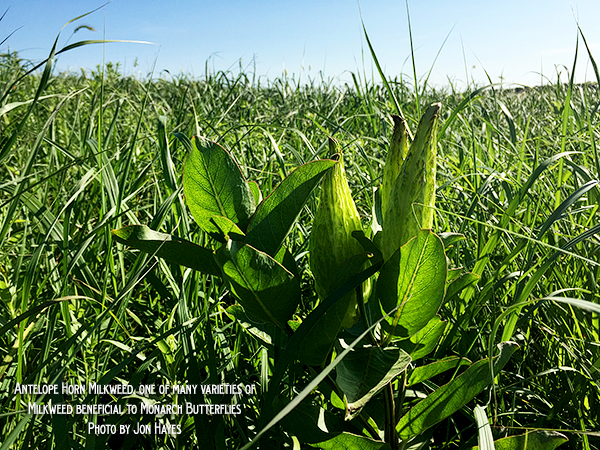Monarch Butterflies

2024 Spring Antiques Show | March 14 – 31
2024 Fall Antiques Show | October 10 – 27
 With its brilliant orange and black wings, the monarch is one of the most recognizable butterflies. Some call it the “king of the butterflies.” The name “monarch” can be traced back to early North American settlers who named the impressive orange butterfly after King William, Prince of Orange, Stadtholder of Holland.
With its brilliant orange and black wings, the monarch is one of the most recognizable butterflies. Some call it the “king of the butterflies.” The name “monarch” can be traced back to early North American settlers who named the impressive orange butterfly after King William, Prince of Orange, Stadtholder of Holland.
Monarchs are also known for their remarkable migration; they travel up to 3,000 miles each year. The most well-known migration occurs east of the Rocky Mountains. This migration actually takes four generations of butterflies to complete.
The journey south to central Mexico is completed in one generation. Monarch butterflies overwinter in the mountains of central Mexico in oyamel fir trees, which provide the cool, moist habitat as well as protection the butterflies need during winter. Monarchs begin their journey north in February and March. Once they reach Texas and other southern states, this generation breeds to produce the next generation of butterflies, which will continue the journey north.
Monarchs, like other butterflies, undergo complete metamorphosis. Monarchs lay their eggs on milkweed plants, which are the only plants the caterpillars feed on. Once the caterpillars hatch, they will live on milkweed for about two weeks while they eat and grow. Caterpillars will gain about 2,000 times their original mass over the course of the two weeks.
[pullquote width=”300″ float=”left”]Monarchs have garnered media coverage because their population has declined by approximately 90 percent over the past 20 years. Although several factors have contributed to the population decline, the primary factor is habitat loss.[/pullquote]
As the caterpillars grow, they molt. The period of time between molts is called an instar. Monarch caterpillars go through five instars before reaching the pupal stage. After the fifth instar, the caterpillars find a safe location and spin silk mats. The caterpillars will molt one more time while hanging upside down from these silk mats. Once they molt, they become a pupa or chrysalis. After 10 – 14 days, the adult butterflies emerge.
This first generation of offspring continues the journey north in late April and May. They continue to feed and breed, with each summer generation living two – six weeks as adults. The second and third generations will populate the summer breeding grounds throughout the northeastern United States and Canada. The fourth generation that hatches will then start the migration south in late summer through central and southern states back to their wintering grounds in Mexico. They will find stopover sites along the way to feed on nectar and to obtain shelter from harsh weather. This generation of butterflies will congregate in the oyamel fir trees where they will wait out winter and begin the journey north the next spring.
Coinciding with the migration that occurs in the eastern parts of the United States, there is also a migration west of the Rockies. Less is known about this migration, but colonies of monarchs will overwinter along the California coastline in climates similar to those used by monarchs in Mexico. These monarchs migrate east to the Rocky Mountains and north into Canada before returning to the California coastline.
Milkweed Needed
Monarchs have garnered media coverage because their population has declined by approximately 90 percent over the past 20 years. Although several factors have contributed to the population decline, the primary factor is habitat loss. Not only have overwintering sites been lost due to logging of the oyamel forests in Mexico, but crucial habitat in the summer breeding grounds is being lost as well. Land fragmentation, herbicide use and the conversion of rangeland to cultivated land have led to a decline of native plant species, in particular milkweed species on which the monarchs depend for survival.

Texas is unique in that it is located between the summer breeding grounds and overwintering areas in Mexico. Monarchs migrate through Texas in both the spring and summer. It is important they find nectar-bearing plants to feed on throughout their journey as well as milkweed on which to lay their eggs.
If you are interested in helping the monarchs, try planting a variety of both spring and fall blooming nectar plants for the butterflies. Planting certain milkweed species, such as Antelope Horns Milkweed or Green Milkweed, will also provide the essential vegetation for egg-laying and nutrition for the caterpillars. Limiting the amount of herbicides used to control weeds could be a helpful strategy. Most of the annual weeds we strive to control are actually beneficial flowering plants for native pollinators. It is possible to benefit the monarchs—and save money—by eliminating spraying weeds altogether or reducing the area that is being sprayed.
For more information on how you can help monarchs, please visit the Texas Monarch Watch page at the Texas Parks and Wildlife Department.
You may also visit the Texas Milkweeds and Monarchs project page at iNaturalist.
by Laura Sherrod
Wildlife Biologist (Fayette and Lee counties)
Texas Parks & Wildlife Department
2024 Spring Antiques Show | March 14 – 31
2024 Fall Antiques Show | October 10 – 27